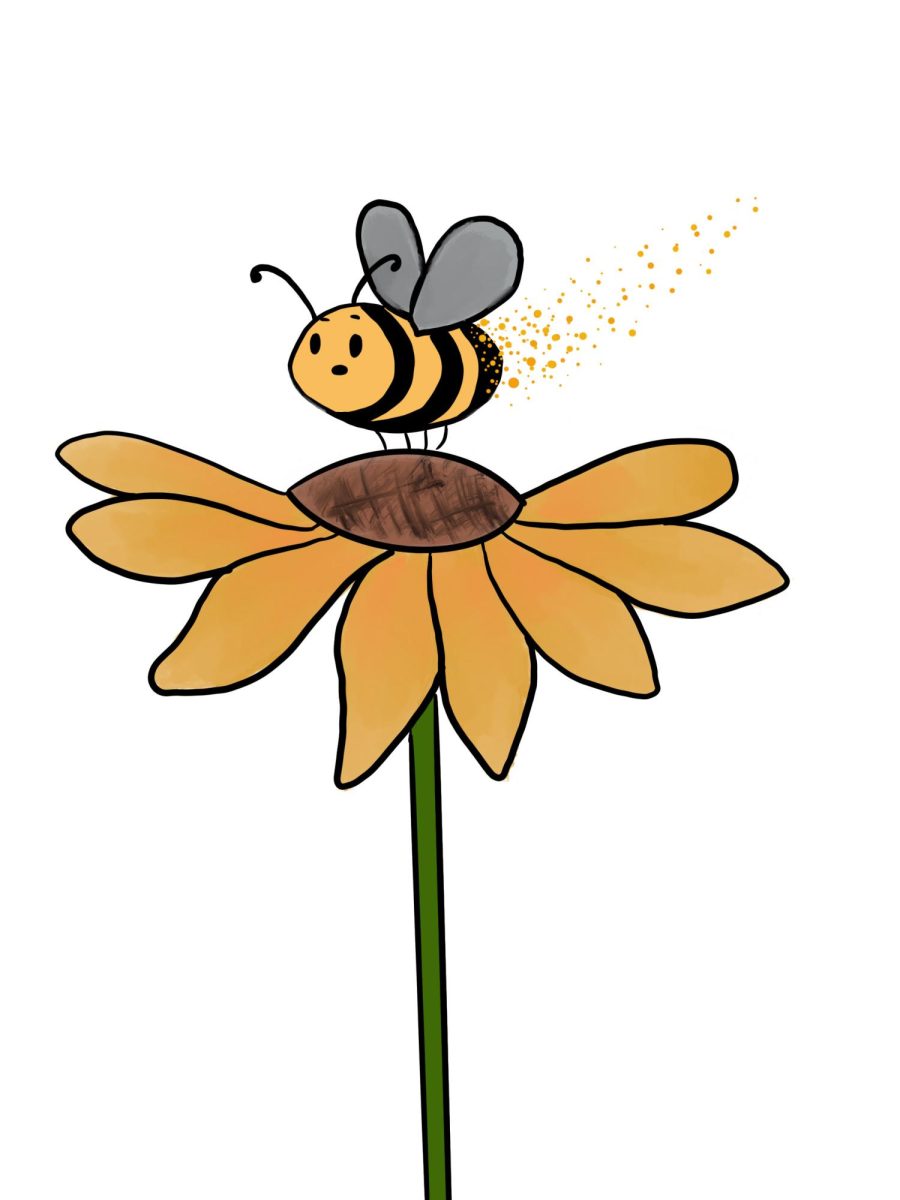
Haley Smith
With spring in full bloom on Kansas State’s campus, many students notice colorful tulips, the chirping of birds and the scent of pear tree blossoms in the wind. However, students with seasonal allergies, like Virginia Hardin, notice a runny nose, increase in sneezing and congested airways.
“Sometimes if it gets too extreme my eyes get really puffy,” Hardin, senior in mass communications, said. “If it’s really extreme, I can’t breathe.”
Professor of horticulture Jason Griffin said allergies ramp up this time of year because of flowering trees which deposit high concentrations of pollen in the air.
“Being a lifelong allergy sufferer myself, I can tell when the Chinese elms and the silver maples are flowering even though I’m not looking,” Griffin said. “… The eyes start to itch, you get that congestion. It’s small pollen so it’s easy to ingest.”
Griffin said even if someone isn’t allergic to the most common plants in Manhattan, they could react to allergens as far away as Oklahoma while living in Kansas.
“It [pollen] travels a long way,” Griffin said. “Think about the trees further south … that pollen blowing miles on the wind, so it’s not just the trees in your backyard that are flowering. It could be pollen that’s travelling a long ways.”
Michael Campbell, medical director for Lafene Health Center, said it’s important for allergy sufferers to find “their season.”
“Figure out what [your] trigger is or what time of year to take medicine,” Campbell said.
For some, however, “their season” is all year. Griffin said while trees bloom in the spring, other plants wait for their turn to shed pollen.
“There’s always something that’s in bloom, but as far as a large concentration of pollen, it really starts to taper off once we get through April, from trees,” Griffin said. “Then you got to start worrying about the native prairie grasses that are going to start shedding pollen as well.”
However, relief is possible for those with severe symptoms. Campbell said Lafene offers a variety of treatment options for allergy sufferers.
“For people that have tried prescription medicines and still have had bad allergy symptoms, we’ll recommend seeing an allergist and doing allergy testing,” Campbell said. “… And then the allergist can either do prescribed allergy injections, or there actually are allergy drops as well.”
Allergy immunizations contain microdoses of the patient’s allergy triggers to help them build up tolerance over time.
“Most people start out at getting those injections once a week,” Campbell said. “We don’t do the first injection here. We have them see their allergist, do it at the allergist’s office for their first injection but then we do all the subsequent injections.”
Campbell said patients should note that allergy injections pose a very low risk of anaphylactic reaction.
“We do training and drills multiple times a year to be able to treat those patients,” Campbell said. “We see some of our allergy injection patients will go into anaphylaxis and we’ll treat them with epinephrine and occasionally we’ll have to send them to the emergency room if they’re not responding here, so that’s why it’s not something you can just do at home.”
Another option for allergy-sufferers are drops which are placed under the tongue daily and administered at home.
“They tend to be more expensive than the injections,” Campbell said. “Some insurances will pay for them and some won’t, and will want people to do the cheaper injections.”
Campbell said behavioral changes to your daily routine can also mitigate symptoms.
“A lot of us are allergic to dust mites or pollen that’s in the air, so cleaning [can help],” Campbell said. “Vacuuming the carpet more often … wipe down floors if it’s hard surfaces. For dust mites, they make special pillows or covers for your pillow. A lot of our time that we spend is sleeping that you don’t really think about, but you’re breathing in things that are close to your bedding, so washing your sheets regularly [can help].”
Hardin said she recommends switching up your over-the-counter allergy medicines every so often, as well as “taking care of yourself, generally.”
For help treating allergy symptoms, students can visit the Lafene Health Center Allergy Clinic.